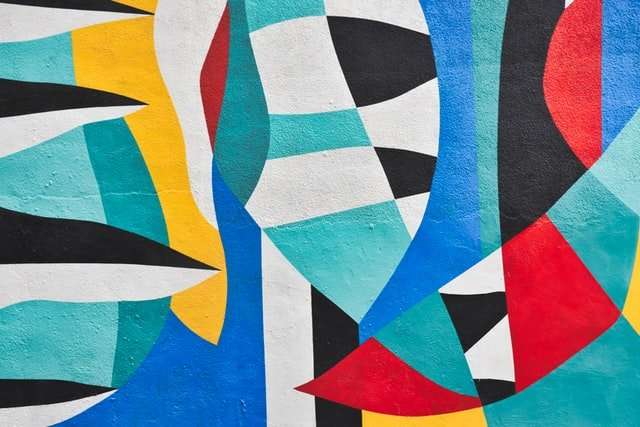Native American artists were keenly aware of their cultural past. In great part, they were motivated by the desire to preserve their culture. They searched the past and found a source of inspiration in the rich heritage of Native American art.
The more that was lost as years passed, the more they strove to record it. To them this seemed perfectly natural. They were only doing what any artist would do: exploring one’s heritage, looking for sources of inspiration.
Trying to preserve their culture was not just a matter of preserving the past; it was a matter of survival. Many Native American artists sought ways to renew traditional crafts and art forms that had been in danger of disappearing. It was no longer sufficient to create new things; there was also a need to learn how to reclaim old traditions and re-create old designs.
The history of Native American art can be broken down into three broad periods – Precontact Period, Period of Colonization/Resistance, Postcontact Period – but even these are not clearly defined periods with clear beginnings and endings set out in history books. The earliest known example of Native American art is from about 13,000 years ago: a carving on a mammoth tusk found in South Dakota that depicts an animal being hunted by humans (the
The history of Native American art is a long one. It dates back to the time when the first settlers arrived on the continent. Many different cultures developed art forms of their own, from carving and painting, to pottery and basketry. The Native Americans are one of the ethnic groups that created their own highly developed artistic styles.
Tribal people have always had a great respect for the natural world around them, and they tried to reproduce it in their artwork. Various tribes depicted animals and birds realistically, in contrast to most western artists who tried to idealize them.
The first Europeans found a flourishing native American art scene. They were impressed by its scope and vitality, but also disturbed by what they saw as “primitive” themes. Their response was to try to eradicate the native culture, but this only succeeded in accelerating indigenous culture’s decline. Out of this decline came new forms of art which have endured into modern times.
The next time you visit a museum of Native American art, take a look at the list of artists. You’ll see that many of these works are labeled “Anonymous.” This is because it was not until recently that many tribes exhibited any interest in claiming their own artistic heritage. Traditionally, to be an artist was considered a form of witchcraft and young men were forbidden to develop this skill. But now native artists are reclaiming the right to their own art and creating new works that combine traditional tribal motifs with contemporary materials and designs.
The history of Native American art is a sophisticated subject that dates back well over 25,000 years. Around that time, the Paleo-Indian culture emerged in North America and began to flourish along with the creation of new tools and techniques for drawing and painting. The earliest examples of art from this culture can be found on cave walls and rock slabs throughout the country and have been dated as far back as 15,000 BC.
In addition to cave paintings, ancient American Indian artwork also included beadwork, weavings, pottery, costumes, masks, jewelry, weapons and more. Because each tribe had its own unique history and culture, Native American art varied across the continent in terms of style and technique. The Cherokee tribe
Today, most Native Americans live in urban areas, and only a tiny fraction of the population is involved in producing art. But non-Natives continue to find Native American art and artifacts aesthetically appealing for many reasons: their spiritualism, the sense of direct connection with the maker, the unadorned beauty of the work.
The oldest pieces are stone tools and weapons made by Paleo-Indians (14,000–8000 B.C.) and Archaic peoples (8000–1000 B.C.). These were followed by ceramic vessels created by Woodland peoples (1000 b.c.–a.d. 1000). Pottery is an ancient craft, but it was perfected by Native Americans living in eastern North America.
From a distance, these pots looked like any other earthenware vessels that dotted the landscape during colonial times: brown or tan with a simple pattern painted on the surface. But when colonists came closer, they noticed something odd about them: there was no glaze on the surface. The dull sheen was from the potter’s skillfully stippled design.
In 1768 Captain James Cook sailed along the east coast of Australia and made some rough maps of his discoveries. One of his more accurate charts included what became known as Bot
Native American art is a distinct art form that is practiced by the indigenous people of the Americas. The art is based in various traditions, histories and beliefs that are unique to each tribe. There are over 500 different Native American tribes in the United States alone, each with their own culture and history.
The Native American art movement has influenced modern day artists such as Andy Warhol, Pablo Picasso and Georgia O’Keefe. Native American art was also very popular in the 1960s and 1970s as part of the counter-culture movement.
Native American art is a vast and diverse set of visual arts created by Native Americans in the United States (including Alaska) and Canada, as well as by American Indian and Inuit artists from Canada. It includes works in a wide range of media, including painting on hides, pottery, woven baskets, textiles, sculpture, rock art, sandpainting and music. Native American artworks are defined as paintings, sculptures, weavings or other artistic works that are created in a style influenced by native traditions.
The definition excludes works by non-Native artists that have been incorrectly labeled as Native American art. The definition also excludes images produced by Native Americans exclusively for sale to tourists; these commercial products are often referred to as “Indian” souvenirs. Such items can be viewed as a form of “cultural appropriation.” Art produced by Native Americans from ancient times through the early 19th century was expressive of an identity that had been shaped by their common experiences as a conquered people forced into marginal territories on reservations where their cultures were threatened. These common experiences included warfare with European colonists and each other in the case of tribes such as the Iroquois; enslavement generations earlier of Africans brought to America; forced relocation from ancestral lands; Christian missionary activity that sought to suppress native
Just as the Christian Cross emerged as a representative symbol of Christianity, so did the image of a man’s face become a representative symbol of Native American culture. The face is significant in that it represents not only the diversity of individual Native American cultures but also the unity of them all.
The well-known image of a Native American face comes from the Iroquois tribe. There are several reasons why this particular symbol was chosen.
Before Europeans settled in America, there were about 1,000 different Indian tribes and each tribe had their own language and culture’. Many tribes used art for practical purposes, not for decoration or cultural expression. The ornamentation on everyday objects like clothing and household objects were purely functional and had no meaning other than to differentiate one tribe from another.
As European settlers became more familiar with Indians they began to realize that they were not all alike. For instance, while many tribes painted their faces for war, others did not paint their faces until they reached adulthood. As time went on the differences between Indians grew greater and more obvious to the settlers. At the same time, many Europeans saw a connection among all Native Americans because they looked similar to one another with dark skin, straight hair and strong bodies. Some visual similarities made it easier for early explorers to make



